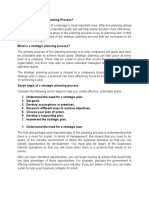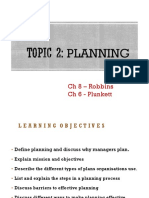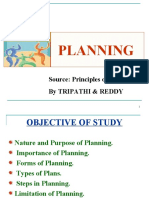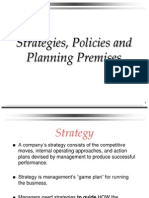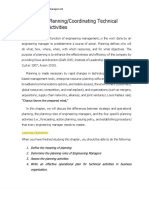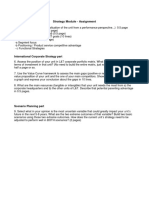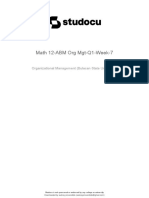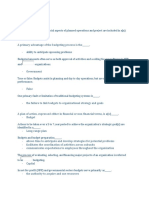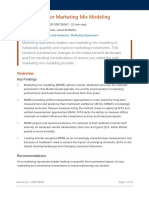0% found this document useful (0 votes)
13 views17 pagesChapter 2 Notes - Management
Chapter 2 discusses the importance of planning in organizations, highlighting its role in providing direction, facilitating decision-making, and improving resource utilization. It outlines different types of plans, including strategic, tactical, and operational, and details the planning process, which involves establishing objectives, analyzing situations, and evaluating alternatives. Additionally, it covers organizational structures, delegation, and qualitative decision-making tools.
Uploaded by
ashtuber2006Copyright
© © All Rights Reserved
We take content rights seriously. If you suspect this is your content, claim it here.
Available Formats
Download as PDF, TXT or read online on Scribd
0% found this document useful (0 votes)
13 views17 pagesChapter 2 Notes - Management
Chapter 2 discusses the importance of planning in organizations, highlighting its role in providing direction, facilitating decision-making, and improving resource utilization. It outlines different types of plans, including strategic, tactical, and operational, and details the planning process, which involves establishing objectives, analyzing situations, and evaluating alternatives. Additionally, it covers organizational structures, delegation, and qualitative decision-making tools.
Uploaded by
ashtuber2006Copyright
© © All Rights Reserved
We take content rights seriously. If you suspect this is your content, claim it here.
Available Formats
Download as PDF, TXT or read online on Scribd
/ 17



















